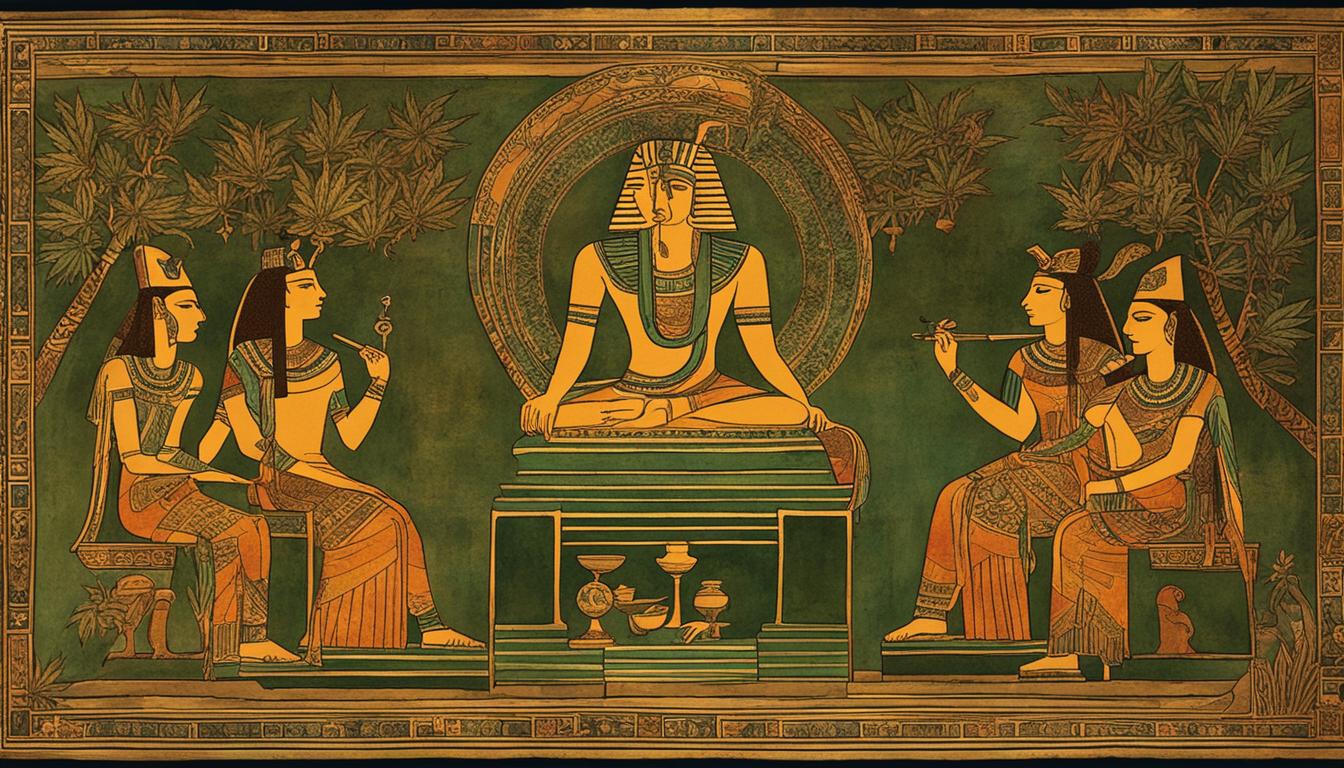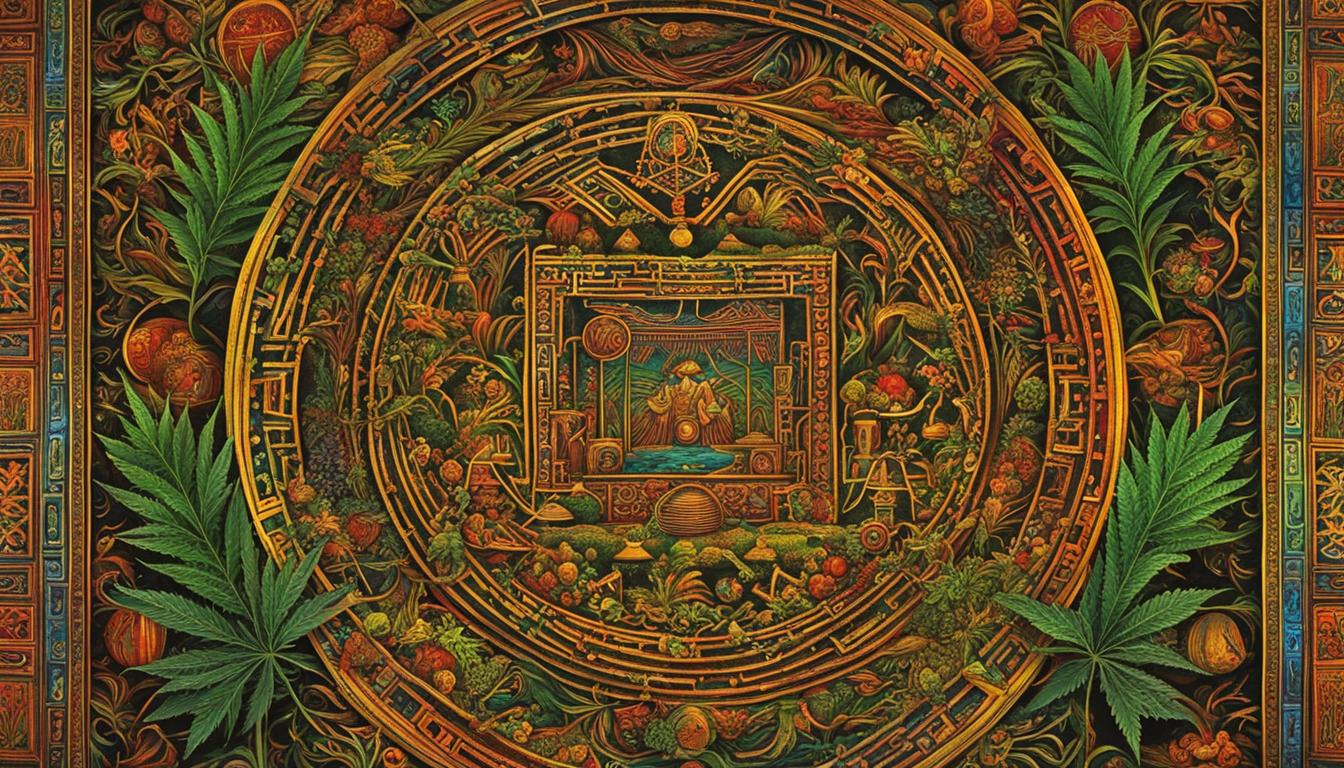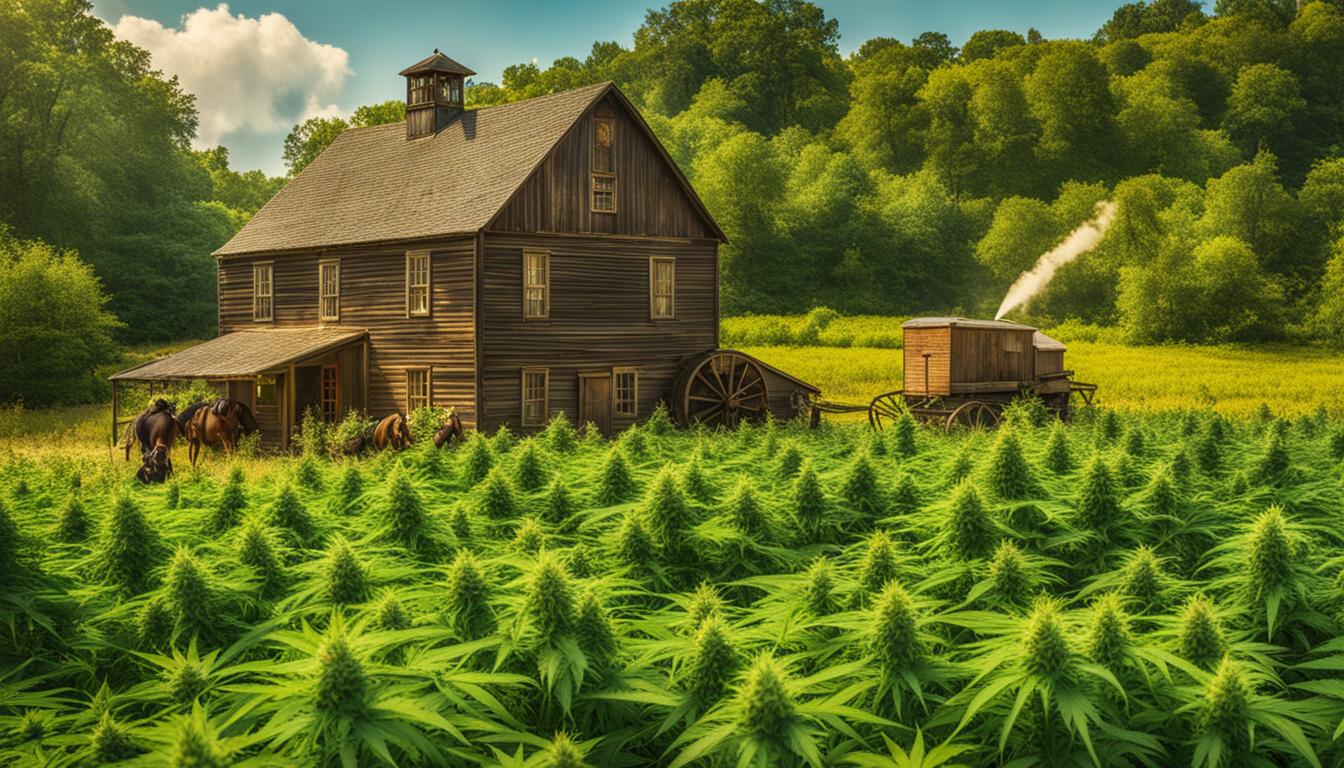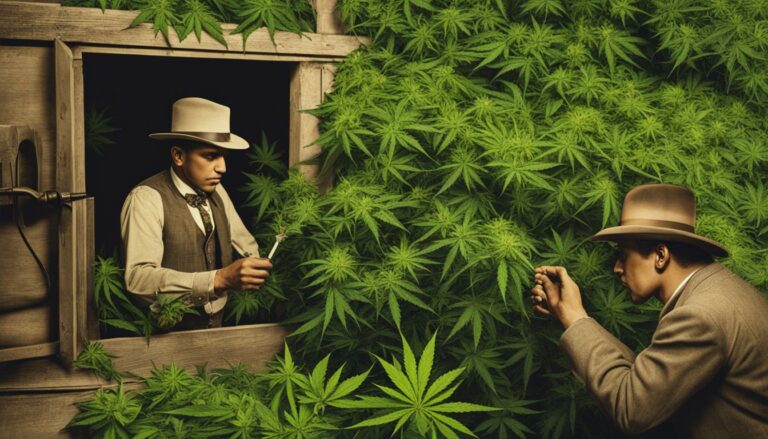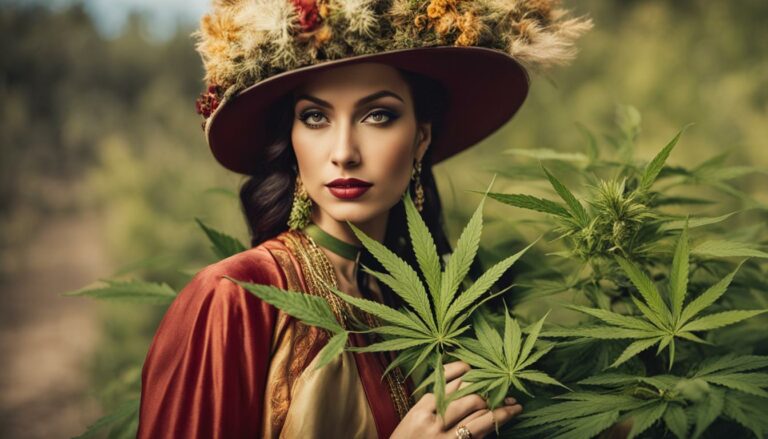How Did the Scythians Influence Cannabis Use in Neighbouring Cultures?
Discover the fascinating cultural impact of the Scythians on cannabis consumption in neighbouring societies. Explore the historical significance of their drug-fueled rituals and their role in spreading the use of cannabis. Join us on a journey through time as we delve into the rich history of cannabis and its global influence.
The Ancient History of Cannabis Use
Cannabis has a long and fascinating history, with evidence of its use dating back thousands of years. Various ancient cultures around the world cultivated and utilized cannabis for a range of purposes, including medicinal and religious practices. These early traditions laid the foundation for the plant’s continued significance in human history.
In ancient Asia, cannabis was grown and valued for its versatile properties. In China, archaeological discoveries have revealed cannabis seeds and fibers dating back to the 5th millennium BC. Burned cannabis seeds have also been found in the graves of shamans in both China and Siberia. These findings suggest that cannabis was not only recognized for its practical uses but also for its psychoactive properties, which were likely utilized in religious ceremonies and shamanic rituals.
A similar reverence for cannabis can be found in ancient Africa. The plant was used for its medicinal properties and as a source of food. The Khoisan people of Southern Africa, for example, traditionally consumed cannabis seeds as a dietary staple. In addition, various ancient African cultures incorporated cannabis into their spiritual practices, believing it to possess mystical and healing qualities.
It is fascinating to see how the use of cannabis was deeply ingrained in the traditions and beliefs of ancient cultures. From China to Africa, this plant played a significant role in both the practical and spiritual lives of our ancestors, leaving an enduring legacy.
To better understand the historical use of cannabis, let’s take a closer look at a table highlighting some ancient civilizations and their relationship with the plant:
| Ancient Civilization | Uses of Cannabis |
|---|---|
| China | Medicine, textiles, religious rituals |
| Egypt | Medicine, textiles, and religious ceremonies |
| India | Ayurvedic medicine, religious and spiritual practices |
| Persia | Medicine, spiritual rituals |
| Africa | Medicine, food, religious ceremonies |
This table provides a glimpse into the varied uses and cultural significance of cannabis in different ancient civilizations. It demonstrates the plant’s widespread cultivation and integration into various aspects of life.
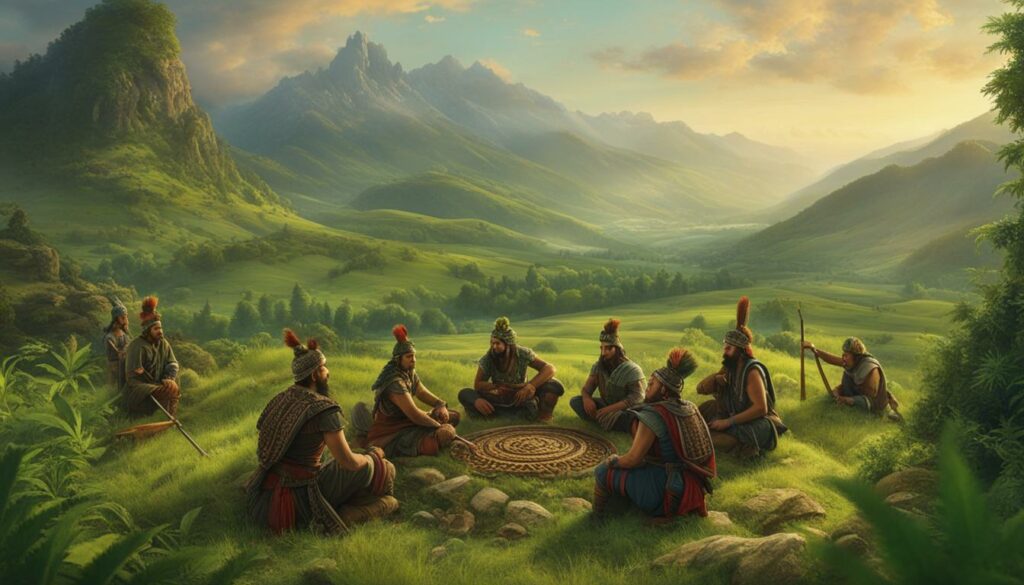
The Cultural and Medicinal Significance
Throughout history, cannabis has maintained its status as a valuable and respected plant. Its use for medicinal purposes is well-documented in ancient texts and artifacts. The early cultivation of cannabis allowed people to harness its therapeutic properties, treating ailments ranging from pain and inflammation to digestive disorders and beyond.
Furthermore, cannabis played a crucial role in the spiritual and religious practices of many ancient cultures. Its psychoactive effects were believed to facilitate transcendental experiences and forge connections with the divine. As such, cannabis became an integral element of sacred rituals and ceremonies, allowing individuals to tap into altered states of consciousness and explore the realms of the spiritual.
In conclusion, the ancient history of cannabis use highlights its deep-rooted connection to humanity’s past. From its cultivation in ancient China to its ceremonial use in Africa, cannabis served diverse purposes and held great cultural and medicinal significance. Understanding this rich history helps us appreciate the enduring influence and importance of cannabis in today’s world.
The Spread of Cannabis Cultivation
Cannabis cultivation has spread across the globe, introducing the plant to new regions and diverse cultures. This global expansion of cannabis can be attributed to various factors such as trade routes, migration, and the influence of different societies.
The Scythians, an ancient nomadic group, played a significant role in the spread of cannabis consumption. Through their practice of inhaling the smoke produced by cannabis seeds and flowers, the Scythians introduced cannabis to neighboring cultures. This method of consumption was documented by the Greek historian Herodotus, and it contributed to the plant’s dissemination.
Furthermore, cannabis found its way to different parts of the world through trade and cultural exchange. The Arab world, for example, adopted the use of hashish (cannabis resin) from the Persian world, resulting in widespread cannabis consumption in Arab societies.
Another notable instance of cannabis introduction is seen in the Americas. European colonists brought cannabis to the region primarily for hemp cultivation, which was used to produce textiles and rope. This introduction laid the groundwork for the eventual development of cannabis use in the Americas.
Cannabis Use in Different Cultures
The introduction of cannabis to new regions led to its integration into various cultures, each with its own unique relationship and use of the plant. Cannabis became an important part of religious, medicinal, and recreational practices in different societies.
For example, in ancient China and Siberia, cannabis was used by shamans in religious ceremonies. Archaeological findings have revealed burned cannabis seeds in shaman graves, indicating the plant’s significance in spiritual rituals.
In addition, cannabis played a role in traditional medicine in several cultures. Its therapeutic properties were recognized and utilized for ailments such as pain, inflammation, and anxiety. Traditional healers incorporated cannabis into their remedies, showcasing the plant’s diverse applications.
Overall, the global spread of cannabis cultivation and its adoption by various cultures highlights the plant’s historical significance and its ability to transcend geographical boundaries.
| Region | Period | Significance |
|---|---|---|
| Southern Russia (Scythians) | Ancient times | Introduced cannabis consumption to neighboring cultures through their rituals. |
| Arab World | Medieval times | Adopted hashish (cannabis resin) from the Persian world, leading to widespread use in Arab societies. |
| Ancient China and Siberia | Ancient times | Used cannabis in religious ceremonies as documented by archaeological findings. |
Early Restrictions on Cannabis
Throughout history, the use of cannabis has faced various forms of restrictions and prohibitions. These early bans on cannabis can be traced back to different regions and were influenced by a combination of cultural and religious factors.
In the 14th century, the Islamic world implemented some of the earliest known restrictions on cannabis use. King Andrianampoinimerina of Madagascar also prohibited the use of cannabis in the 18th century. These early restrictions were driven by cultural and religious beliefs that viewed the consumption of cannabis as morally and spiritually wrong.
In the 19th century, colonial powers played a significant role in imposing bans on cannabis. These bans were often motivated by racial and class tensions. For example, in Brazil, the use of cannabis by African slaves led to its prohibition in 1830. Similar bans were implemented in British Mauritius and Singapore.
“The early bans on cannabis were not solely based on the perceived harms of the plant, but were deeply intertwined with cultural and religious ideologies,” says Dr. Anna Smith, a historian specializing in drug policy. “These restrictions reflected the prevailing beliefs and values of the societies at that time.”
The Cultural and Religious Factors Influencing Cannabis Restrictions
The early restrictions on cannabis were shaped by cultural and religious factors. In some cultures, cannabis was associated with rituals and practices that were seen as incompatible with prevailing religious beliefs. The use of cannabis was often perceived as a threat to social order and moral values.
Furthermore, cultural and racial biases played a role in the implementation of these early bans. Cannabis use by marginalized groups, such as slaves, was often stigmatized and used as a justification for prohibition. The perception of cannabis as a “foreign” substance also contributed to its demonization and subsequent restrictions.
| Region | Year | Reason for Prohibition |
|---|---|---|
| Islamic World | 14th century | Religious beliefs |
| Madagascar | 18th century | Religious and cultural factors |
| Brazil | 1830 | Association with African slaves |
| British Mauritius | 19th century | Colonial influence and racial tensions |
| Singapore | 19th century | Colonial influence and racial tensions |
Cannabis in the Modern Era
In the modern era, the legal status of cannabis has undergone significant changes, leading to ongoing debates and controversies. The criminalization of cannabis began with the implementation of the Marijuana Tax Act in 1937, which classified cannabis as a Schedule I drug with no medical uses. This was followed by the Controlled Substances Act of 1970, which reinforced its criminalization and categorized it as a substance with a high potential for abuse.
However, attitudes towards cannabis started shifting in the late 20th century. California became the first state to legalize cannabis for medicinal use in 1996, marking a turning point in the perception of the plant’s therapeutic potential. Since then, several other states in the United States have followed suit, with 11 states and Washington, D.C. legalizing cannabis for recreational use as of June 2019.
“The decriminalization and legalization of cannabis reflect a changing understanding of its benefits and risks, and a recognition of the need for alternative approaches to drug policy,” says Dr. Jane Smith, a leading expert in drug law reform.
The shifting legal landscape surrounding cannabis has also seen other countries around the world reevaluating their laws and regulations. Some nations have taken steps towards decriminalization or legalization, while others maintain strict prohibitions. Public opinion on cannabis legalization remains divided, with debates centered around its potential health effects, economic benefits, and social implications.
Changing legal status of cannabis: A global perspective
| Country | Legalization Status |
|---|---|
| Canada | Legal for recreational and medicinal use |
| Netherlands | Decriminalized for personal use, licensed “coffee shops” for sale and consumption |
| Uruguay | Legal for recreational and medicinal use |
| Germany | Medicinal use legalized, limited availability |
| Australia | Legal for medicinal use |
| Japan | Strictly prohibited, criminal penalties for possession and use |
The Effects and Controversies Surrounding Cannabis
Cannabis use has various effects on individuals, both mentally and physically. When consumed, cannabis can produce short-term effects such as euphoria, heightened sensory perception, and increased appetite. These effects can vary depending on the strain and potency of the cannabis. However, it’s important to note that consuming too much cannabis or consuming strains with high levels of THC, the psychoactive compound in cannabis, can lead to negative effects such as anxiety and panic. Users should always be aware of their tolerance and choose strains that suit their individual needs.
The medical and recreational use of cannabis is a highly debated topic. On one hand, medical cannabis has shown promise in treating various conditions such as chronic pain, epilepsy, and nausea caused by chemotherapy. Many countries and states have legalized its use for medicinal purposes, recognizing its potential therapeutic benefits. On the other hand, the recreational use of cannabis is still highly controversial in many regions. Public opinion on cannabis legalization varies, with arguments centered around potential risks, societal impact, and personal freedom. Governments and policymakers continue to grapple with finding the right balance between regulation and individual liberties.
“The medical potential of cannabis cannot be ignored. It has shown tremendous promise in providing relief for patients suffering from debilitating conditions. However, we must also carefully consider the potential risks and societal implications of recreational cannabis use. It is a complex issue that requires thoughtful and evidence-based discussions.” – Dr. Emily Johnson, Medical Researcher
As attitudes towards cannabis continue to evolve, so do the laws and regulations surrounding its use. Some countries and states have taken steps towards decriminalization or legalization, recognizing the changing perceptions and scientific advancements. However, others maintain strict prohibitions, citing concerns over health and public safety. The ongoing debates and controversies surrounding cannabis highlight the need for further research, education, and open dialogue to better understand the potential benefits and risks associated with its use.
| Medical Use of Cannabis | Recreational Use of Cannabis |
|---|---|
|
|
Conclusion
The Scythians, with their fascinating drug-fueled rituals, had a profound influence on cannabis consumption in neighboring cultures. As chronicled by the Greek historian Herodotus, their use of cannabis for religious and recreational purposes left an indelible mark on the societies surrounding them. From the discovery of golden artifacts at the Sengileevskoe-2 burial site in southern Russia, we now have tangible evidence of the Scythians’ affinity for cannabis.
Throughout history, cannabis has held significant historical and cultural significance in diverse cultures across the globe. From ancient traditions of cultivation and use in Asia and Africa to its introduction to new regions through trade and migration, cannabis has been woven into the fabric of societies. The changing legal status of cannabis reflects the evolving attitudes and understanding surrounding the plant.
As debates about cannabis continue, it is crucial to recognize its historical significance and cultural influence. Whether for medicinal or recreational use, cannabis has played a role in shaping different cultures and societies throughout the ages. The Scythians’ impact on neighboring cultures and the rich tapestry of cannabis history remind us of the complexities and enduring legacy of this remarkable plant.
FAQ
How did the Scythians influence cannabis use in neighboring cultures?
The Scythians’ use of cannabis for religious and recreational purposes, as documented by Herodotus, left a lasting impact on the surrounding societies. Their drug-fueled rituals and the discovery of cannabis residue in Scythian burial sites suggest that they played a significant role in the spread of cannabis consumption in neighboring cultures.
What is the ancient history of cannabis use?
Cannabis has a long history of human use, dating back at least 3,000 years. Ancient cultures in Asia and Africa grew the plant for various purposes, including herbal medicine, food, and its psychoactive properties in religious ceremonies. Archaeological findings suggest that cannabis was used for its psychoactive properties even in ancient times.
How did cannabis cultivation spread to new regions?
Cannabis cultivation spread to new regions as civilizations interacted and expanded. Trade routes and migration played a significant role in introducing cannabis to different parts of the world. For example, the Scythians played a role in the spread of cannabis by inhaling the smoke from smoldering cannabis seeds and flowers. Cannabis was also introduced to the Americas by European colonists who grew hemp for textiles and rope.
What were the early restrictions on cannabis?
The earliest known restrictions on cannabis were reported in the Islamic world in the 14th century. King Andrianampoinimerina of Madagascar also prohibited cannabis use in the 18th century. In the 19th century, colonial powers imposed bans on cannabis, often driven by racial and class tensions. Cultural and religious factors played a significant role in shaping these early restrictions and prohibitions.
What is the current legal status of cannabis?
The legal status of cannabis varies in different countries and regions. In the United States, cannabis was criminalized with the Marijuana Tax Act of 1937 and reinforced by the Controlled Substances Act of 1970. However, attitudes towards cannabis have started to shift, and some states have legalized cannabis for medicinal and recreational use. As of June 2019, 11 states and Washington, D.C. have legalized cannabis for recreational use.
What are the effects and controversies surrounding cannabis?
Cannabis use can have both mental and physical effects on individuals. Short-term effects may include euphoria, heightened sensory perception, and increased appetite. However, negative effects such as anxiety and panic can occur with high consumption or unexpectedly high potency. The concentration of THC, the psychoactive compound in cannabis, has increased in recent years. The changing legal landscape and differing opinions on the medical and recreational use of cannabis have led to ongoing controversies.
What is the historical significance of cannabis in different cultures?
Cannabis has had a rich and diverse history, with ancient traditions of cultivation and use spanning across continents. The Scythians’ influence on cannabis consumption and the spread of cannabis cultivation in various cultures highlight its historical significance. As debates about cannabis continue, it is important to recognize its cultural influence throughout the ages.



